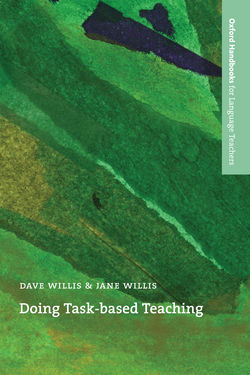Читать книгу Doing Task-Based Teaching - David Willis - Страница 7
На сайте Литреса книга снята с продажи.
1
THE BASIS OF A TASK-BASED APPROACH
1.3 Language as meaning
ОглавлениеWhen children begin to use their first language they communicate without using sentences. Early utterances may simply consist of pairs of nouns like ‘book table’. Depending on the context and intonation and the accompanying gestures this may be interpreted as ‘The book is on the table’, or ‘Please put the book on the table’, or ‘Shall I put the book on the table?’ Relying on a shared context, children manage to convey meanings quite effectively without using grammatical sentences. Much the same is true of learners at the elementary level.
Taking this observation as a starting point, one might argue that early communication is primarily lexical and that grammar plays a subsidiary function. Let us put this to the test by looking at a text which has minimal grammar:
Mother little girl. Mother say little girl go see grandmother. Mother give little girl big basket food. Mother say ‘You take food grandmother …’.1
We feel reasonably confident that many of you will have identified the opening of the story of Little Red Riding Hood. It is not true to say, however, that we have simply a string of words to tell this story. If we had offered you the sequence:
Mother girl little. Say mother grandmother go see girl little. Basket big food girl little mother give. Say ‘Grandmother food take you …’ mother.
You would certainly have found this much more difficult, perhaps impossible, to interpret. What, then, is the important difference between the first and the second versions of the story?
You might answer this by saying that the word order in the first version makes sense. More precisely, you might say the first version follows the conventions of English clause and phrase structure. Each clause has the structure ‘subject + verb + …’. In the phrases ‘little girl’ and ‘big basket’ the adjective comes in front of the noun. So the first version does conform to some of the rules of English grammar. It follows the rules of English word order, the rules of English clause and phrase structure.
So, it is possible to tell a story quite adequately with a string of words and a very limited grammar of structure. There are no definite articles or indefinite articles in the first version of the story, and no other determiners such as ‘this/that’ or ‘his/her’. There are no verb tenses. This raises an interesting question. If things like articles and tenses are unnecessary why do we bother with them at all? The answer, of course, is that articles and tenses are far from unnecessary. Even in the telling of a simple story we can make things much easier for our listener by using the full resources of the grammar:
Once upon a time there was a mother who had a little girl. The little girl was going to see her grandmother. Her mother gave her a big basket of food and said ‘Take this food to your grandmother’.
So grammar is vital if we want to make things reasonably easy for listeners or readers.
It is also difficult to express complex abstract meanings without grammar. One day our daughter, Jenny, was playing in the garden with her two-year-old son. He was filling a bottle with water from an outside tap, pouring the water in a hole he had dug and watching it disappear. Jenny was thirsty and asked him for the bottle. When he gave it to her she drank some of the water. He was horrified. ‘No,’ he said, ‘that water not for drinking. It for putting in hole.’ He used the form ‘for + – ing’ to express purpose, and it is difficult to see how he could have got his message across efficiently without that complex little bit of grammar.
1
We are indebted to Andrew Wright for this striking example.
